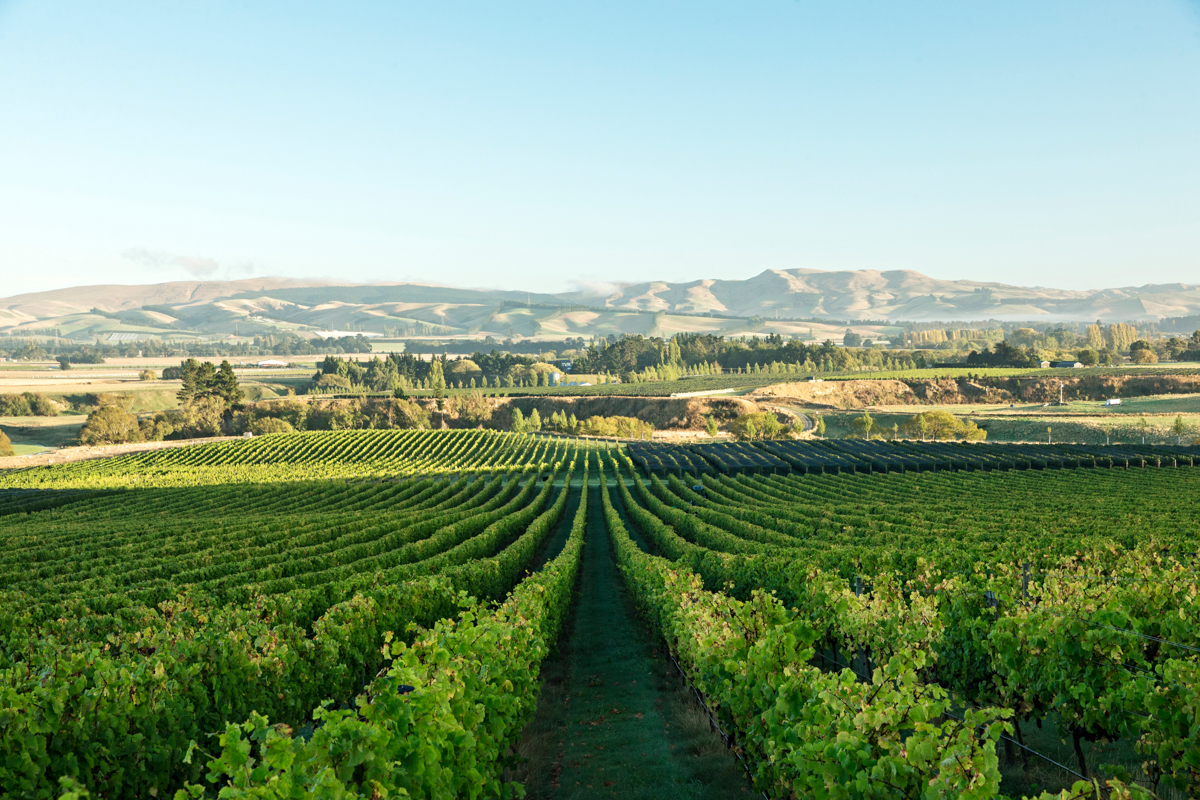Sophie Preece
A high-resolution vineyard view of ecoclimatic indicators, and how they impact wine quality, can turn “climate insights into strategy”, says climate risk specialist Pete Taylor. “Whether you’re a grower, winemaker, or industry leader, understanding the future is key to staying ahead.”
By day Pete Taylor works in the finance industry, developing climate risk models across myriad sectors. But a passion for wine has him homing in on viticulture in his business Auxein, launched this year to help the wine industry move to a “sustainable and resilient future”.
Alongside climate risk and carbon management consultancy, Pete has developed vineyard specific models and datasets related to climate for every vineyard in New Zealand, with a modelled climate projection out to 2100. “These datasets include vineyard-specific attributes to ensure results are tailored to the producer.” Earlier this year, he completed a free pilot study for North Canterbury Winegrowers, highlighting projected shifts in climate indices, with growing season warmth increasing and frost risk declining. “The data suggests significantly earlier flowering, veraison, and harvest dates, changing how grapes ripen, will impact quality in many ways.”

Matt Barbour, Chair of North Canterbury Winegrowers, says the report will be “extremely valuable” for anyone in the winegrowing business, “and for those looking to invest in the future”. It has the potential to influence varieties planted and growth stages over the growing season, Matt says. “The more information you can supply the better, as his model works with so many variables it is mind blowing.”
In 2023 and 2024 Pete studied for his master’s degree in wine and viticulture at Lincoln University, where his research project, supervised by Dr Amber Parker, looked at the impacts of climate on Pinot Noir wine quality, at a single vineyard scale. Previous studies modelled the impact of climate, including temperature, on wine quality. “However, these approaches are limited to regional resolution, with a single climate dataset applied to all vineyards.”
They built a climate record for Pinot Noir vineyards for the 2015 to 2022 vintages, then used the record to simulate phenological timing of flowering, veraison, and ripening, and to determine the influence of frosts, hot days, stress days, and diurnal temperature range on Pinot Noir quality. “Both an increasing incidence of hot days and increasing diurnal temperature ranges between both flowering and veraison and veraison to ripening were positively and significantly related to Pinot Noir quality,” Pete says. The research and modelling approach is being scaled up to include temperature, precipitation, global radiation, and other climatic variables, with outputs including a full climate history and (modelled) projected climate for every single vineyard block in New Zealand, “with endless potential applications”, he adds. The research will be published later this year.
Amber says the work is exciting for researchers and industry as it interfaces different types of dataset (climate, GIS, wine scores) and models (phenology, climate projections) to generate a deeper understanding of future climate risks for Pinot Noir at the single vineyard level. “The approach and platform that Peter has established could easily be extended to other varieties and vineyard. It also has the potential for constant refinement as models and data continue to develop and improve.”
This article was first published in New Zealand Winegrower magazine issue 152 and is republished with permission.













